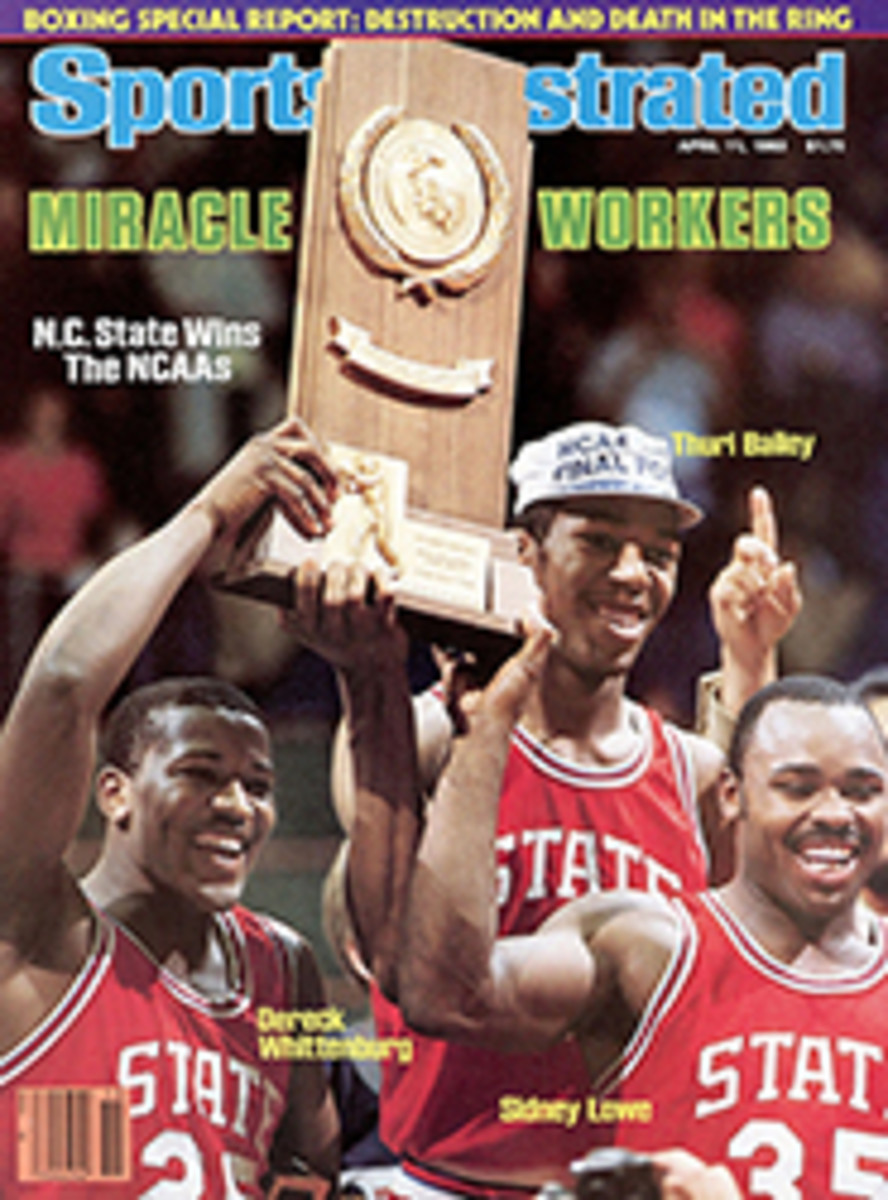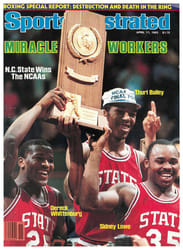
How Punchy Was Slapsie Maxie?
The most frequently cited defense of boxing is that it gives poor kids an opportunity to better themselves, to fight their way out of the ghetto. In the U.S. today that applies primarily to blacks and Hispanics, but in the old days the disadvantaged young fighters tended to be European immigrants' sons—Irish, Italian, Jewish. They were the scrappers reared in the tenements of the turn of the century. Slapsie Maxie Rosenbloom, a light-heavyweight champion in the early 1930s, was one. Born in New York in 1904, Maxie started boxing at the age of 12, not long after being released from the Hawthorne Reform Home for Jewish Boys. He'd been parked there for 13 months for hitting a teacher and knocking out two of her teeth. Soon thereafter his mother enrolled him in ballet school, but that only made him more pugnacious because the other kids on the street called him a ballerina. Maxie later claimed that it was George Raft, the future Hollywood actor but then just another neighborhood pal, who steered him from ballet to a better use of his skills in the ring.
From the beginning Rosenbloom was an eccentric fighter. He never trained very much. He gambled and ran around, and he would get into shape by "dancing" in the gym. But he became an excellent defensive boxer—hard to hit. His offense consisted of open-handed cuffs, delivered in startling flurries, and crazy-legged footwork. He confused his opponents and wore them down. Rosenbloom had several hundred fights as an amateur, winning the New York State light-heavyweight crown in 1930. Damon Runyon, then a sportswriter, dubbed him Slapsie Maxie soon after he turned pro in 1923. On June 25, 1930, the 25-year-old Rosenbloom won the world light-heavyweight title by outpointing Jimmy Slattery in 15 bloody rounds. By then he'd discovered he could make people laugh with his parody of the punch-drunk boxer, the happy-sad staggering figure that fight fans knew so well. That Maxie, they'd say as they watched him prance and joke in the gym, what a card.
Rosenbloom's reign as light-heavyweight champ ended in November 1934 when he lost to Bob Olin, but he continued to fight until 1939. He can't be said to have been a great champion. In 289 professional bouts—a stupendous number—he scored only 18 knockouts. He utterly lacked a killer instinct. Once a referee was about to award him a TKO because his opponent had a badly cut ear, but Rosenbloom told the ref no, don't stop it, I just won't hit the guy in the head anymore. He always liked to go the distance.
The Hollywood film crowd fell in love with Maxie. In 1933, while still champion, he appeared in his first feature, and for the next 25 years he was as active as a character actor as he'd been as a fighter. In more than 60 movies he usually played one of two parts—if he wasn't a boxer, he was invariably the comic tough guy, the B-movie gangster, saying "dese," "dem" and "dose" in his heavy New York accent and getting into trouble with his punchy foolishness.
For a while he had his own nightclub in Los Angeles, Slapsie-Maxie's. When he got up on stage, rocking back on his heels, he'd slur his trademark opening line—"I never liked to hit very hard"—and the audience would break up. He had a gift for the addled malapropism: "Waitress, I'll have a steak sandwich."
"How would you like it?"
"Well-to-do, please."
He used gag writers, but he could ad-lib, too. Countless columnists, knowing Maxie to be a reliable source of funny material, interviewed him lo find out which sweet thing he wanted to marry next or how much he'd lost at the track.
Maxie was always "on," always in character, whether he was performing or not. A few people began to suspect that it was more than an act. If you didn't know Maxie, you'd have certified him as punch-drunk, because he so looked the part. He had a swollen left ear and a splayed nose. He was jealous of Max Baer, another fighter-actor who did a routine with him, because Baer had bushy eyebrows while Maxie had only adhesions where stitches had been. His slurring and unsteadiness grew more pronounced, though his friends maintained until the end that it was all an exaggeration, as it had been in the beginning.
Though he was out of show business by the late '50s, Maxie was still a minor celebrity at the corner of Hollywood and Vine, not far from the residential hotel where he lived for 25 years, mostly alone. In 1968, while leaving the hotel one night, he was mugged and apparently hit on the head with a pipe. Though he recovered after being hospitalized, within a year he lost his bearings altogether.
In January 1972, with Maxie's relatives nowhere to be seen, a Los Angeles court appointed the executive director of the Motion Picture Fund to be his guardian. Two weeks earlier, the court papers show, "the alleged incompetent," then 67 years old, had been committed to the Braewood Sanitarium in South Pasadena. His friends from show business and sports would come to visit Maxie, at least for the first few years, until he began failing to recognize them. Even so, he was able to get off one more good line: A friend brought in a former boxer to see Maxie—the two had fought exhibitions in the Pacific during the war. Maxie didn't know who the man was. "Maxie," the fighter protested, "you remember New Caledonia, don't you?" Maxie still looked blank but shot back, "I don't even remember old Caledonia." According to his death certificate, he expired on March 6, 1976 of heart failure abetted by influenza and Paget's disease, a degenerative bone condition—none of which, presumably, disturbed his twilight of demented contentment.
Although the obituaries reported Rosenbloom's doctor's assertion that Maxie's decline was attributable to the head blows from his numerous fights, sports columnists disputed this. John Hall in The Los Angeles Times: "The doctors said he took too many punches and there was 'a good deal of damage to his brain.' Thai's got to be a lie. Nobody ever hit Maxie. He slapped and slipped and danced. But he looked as if he'd been hit. The twisted nose was smashed all over his magnificent face."
Red Smith in The New York Times: "The obituaries said his condition was the result of taking too many punches. Nonsense. Plenty of wives take more punches than Max ever did, and bury several husbands."
To this day most of the people who knew Rosenbloom are vehement on this subject. "Are you crazy?" says Everett Sanders, a former California boxing commissioner, now 88. "I knew Maxie like a son. Maxie Rosenbloom was never punch-drunk. Not at all." Sanders and others maintain that he showed only the effects of premature aging and that the rest was a gag. "He went senile, not punchy," says Sammy Lewis, a nightclub partner of Maxie's. "But later in life," Lewis adds, "if you take those punches, something's got to give."
Dr. Robert Kerlan, a sports physician who knew Rosenbloom slightly, has perhaps a more balanced opinion. "He had the classic slurring, the cauliflower ears, the scar tissue," Kerlan says. "He was the prototype of the punch-drunk fighter. But the real punch-drunk boxers are a far cry from what Maxie was. Believe me, I've seen them and they're far worse. But Maxie just exaggerated whatever tendencies he had in that direction."
PHOTO
Maxie couldn't cuff Olin around in this '34 title fight.
PHOTO
Maxie, sporting square-barreled guns, appeared with Baer in "Skipalong Rosenbloom" in 1951.

